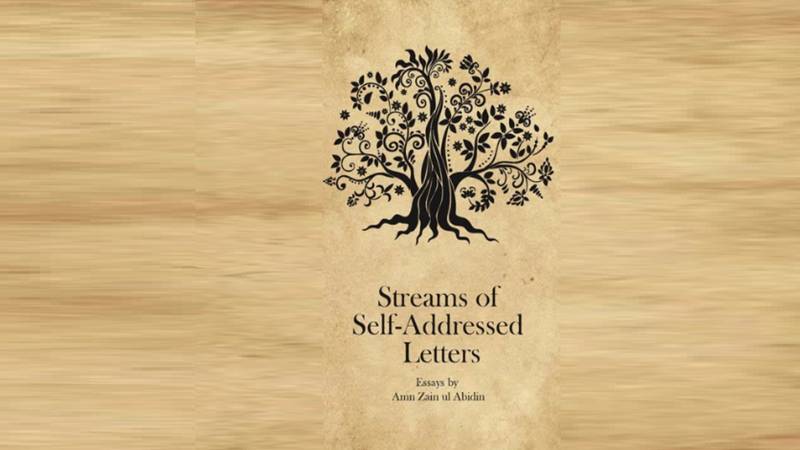
Amn Zain ul Abidin, a student of Advanced Cambridge Level Year 1 at Lahore Grammar School 55 Main, delivers an evocative debut with Streams of Self-Addressed Letters. This deeply introspective work is divided into four sections: Madness (for thoughts that go astray), Melancholia (for astray thoughts to be swallowed), Huntress (for courage amidst adversity), and Hope (for dreams of change and actualization). Through this structure, Amn offers sharp insights into universalism, existential challenges, and youthful idealism, presenting a bold critique of personal and societal struggles. These inked pages provide an unfiltered glimpse into the human psyche, capturing raw emotions and reflections through an unorthodox narrative style that feels both intimate and universal.
The most striking feature of this work lies in its lack of mediation by any ideological, societal, anthropological, or other “isms” and lenses that often distort visceral figments. It is less a cerebral project and more a raw recording of consciousness in real time, embodying the "stream of consciousness" technique. The writer herself acknowledges this in the preface, and it is evident from the title that these inked pages adopt “stream of consciousness” as the outlet to pour out whatever simmers inside.
Title: Streams of Self-Addressed Letters
Author: Amn Zain ul Abidin
Year: 2024
Publisher: Sang-e-Meel Publications
This is where the book truly shines—a quiet sanctuary where thoughts, feelings, and dreams coalesce into something tangible. The act of recording one’s consciousness is profoundly humane and deeply artistic. Each word, each line, becomes an extension of the mind, a reflection of the soul's intricate dance.
Who could be more intricately artistic than humans? We transform fleeting thoughts into poetry, emotions into music, and silence into stories that echo across time. In the words of Henry Ward Beecher, “Every artist dips his brush in his own soul, and paints his own nature into his pictures.”
There is no political correctness or the tiresome mantra of "everything is grey" in these inked pages. Instead, they brim with self-expression at its zenith, steeped in radical wilderness
While the author herself doesn’t vouch for a biographical reading, as she states, “The emotional vulnerability does not necessarily reflect my own experiences, because neither have I ever encountered the Merchant of Venice or attended a single dance lesson. What I love the most about writing is that anything and anyone can be made true, real, and different….” I largely agree with this sentiment. However, I also believe that the torrents a writer nurtures in their consciousness and pens down must, to some extent, borrow from their own weltanschauung.
The writing is spectacular—raw, lively, radical, and paradoxical. For instance, when she writes about her teacher and staff in the context of an exam that previously caused a bout of snags, she says:
“But that woman on the mic doesn’t care
All those bores inside those offices don’t see
Those people only see…that.
They don’t! They don’t! They can see the effort. They know it. This is irrelevant to this.
Or is it? Is it?”
There is no political correctness or the tiresome mantra of "everything is grey" in these inked pages. Instead, they brim with self-expression at its zenith, steeped in radical wilderness, and made all the more compelling by the voice of a young girl—an otherwise repressed subject, objectified and appropriated by the male gaze and perennial patriarchal superstructures. At the tender age of 18, one can only imagine the marvels this eloquent pen (Amn’s) has yet to produce.
The repeated use of ellipses throughout the book is particularly striking. It evokes a sense of incompleteness—or perhaps raw completeness, if we view words as distortions of natural silence in our phenomenology. As a reader, I found this to be one of the book’s most compelling features. On one hand, it testifies to the writer’s inability to fully incarnate her thoughts into words. On the other, it invites the reader to fill in the gaps with their own musings, creating a deeply interactive reading experience.
While this is the macrocosmic reading of the book, the microcosm—the specific contents it presents—is equally worthy of reflection. The themes explored within these pages are bracing, delving into the vicissitudes of life. There is a constant worry and remorse for the mishaps occurring in the world. The concept of universalism and responsibility in the face of a capitalist scourge appears languidly throughout, with the young writer assuming the role of an embodiment of guilt for the dystopian world we inhabit.
I highly recommend this book for its radical honesty and raw self-expression. More than just words, it offers a mirror to the human condition, challenging readers to reflect, question, and confront their own consciousness. This is not just a book—it’s an experience, a call to feel, think, and dare to embrace the chaos and beauty of self-expression.

